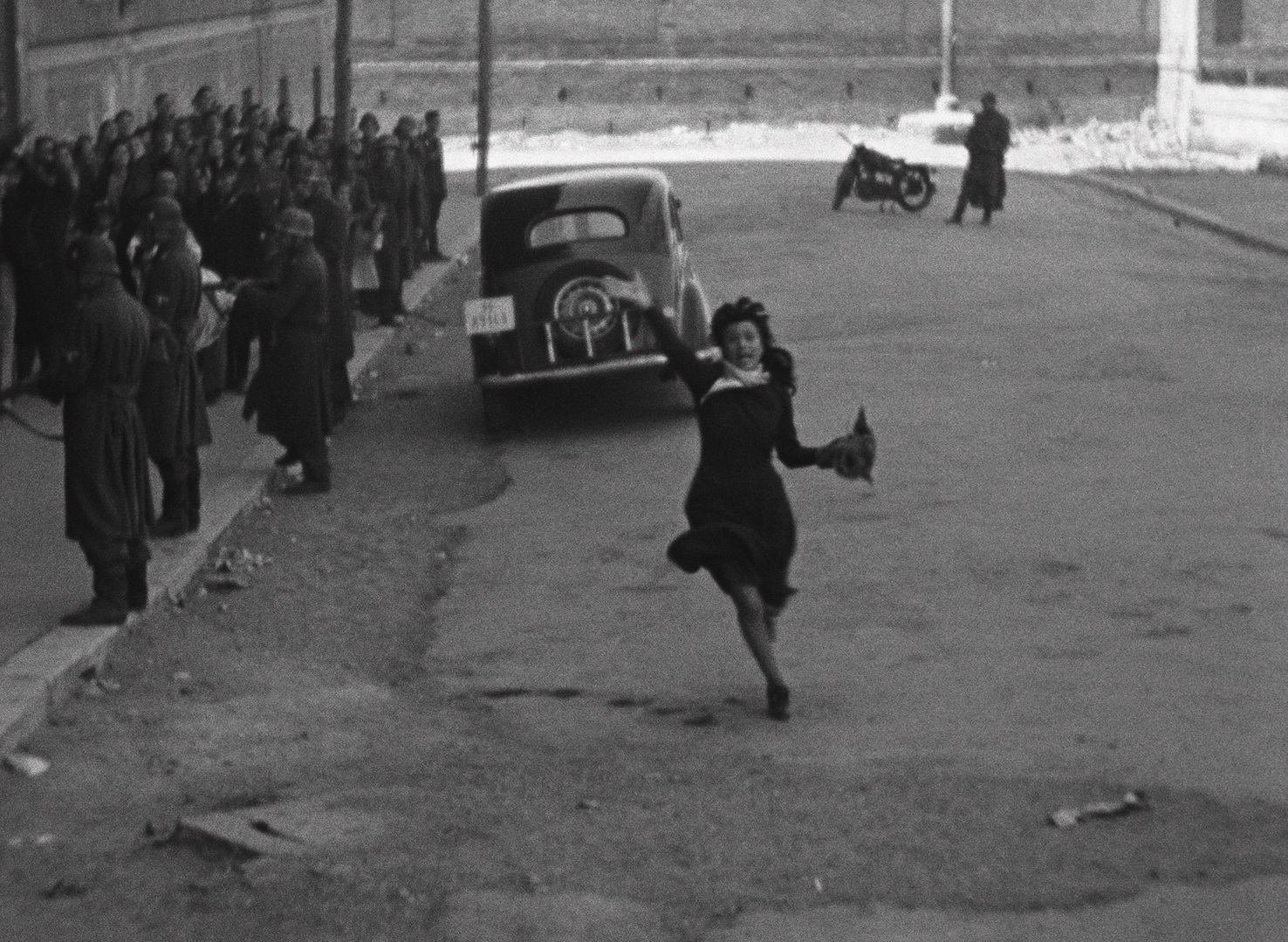
The location: Nazi occupied Rome. As Rome is classified an open city, most Romans can wander the streets without fear of the city being bombed or them being killed in the process. But life for Romans is still difficult with the Nazi occupation as there is a curfew, basic foods are rationed, and the Nazis are still searching for those working for the resistance and will go to any length to quash those in the resistance and anyone providing them with assistance.
FILM NOTES
A priest and a communist fight for the same cause. Behind them, a popular district of Rome moves, with its squalid huts, the courtyards where the story of each is the story of everyone and where suffering and hopes are common. The strength of Rome as an open city lies in this multiplicity of human elements coagulated by a higher unity.
(Carlo Lizzani, Italina Cinema History 1895-1961, Parenti, Firenze, 1961)
Rossellini crosses the neorealist period (which is not only cinematic) making its history, tracing its lines of force, defining the general ideas that support and move it; and doing this he starts from the very appearances of this story, which are first and foremost cinema as the most advanced expressive medium of the time, the medium that in itself puts the notion of art in crisis. Rossellini then uses cinema as a realistic “specialization”, and this is not so much an a priori choice as the consequence of the use of a technology against the rules codified up to that moment, which can be summarized in the ideology of the show and they specify in the star system, in fictional fiction, in the “theatrical” relationship with the public. Cinema goes out onto the streets, it becomes “realistic” when it eliminates a series of dyaframmas with respect to its technical specificity. In Rome, open city, the title itself reveals an unusual opening: the people, not the bourgeois (who live in their offices) but the common people, live outdoors, in the city. If the film is the story of a building, it is so in that the latter is a microcosm that synthesizes (like an en plein air stage) the whole city: our houses are already for Rossellini, in ’45, our streets, and, no longer, the interiors; private life, love stories, involving others, take place in the sunlight; and the clandestinity of the partisan struggle is a new practice, which passes through the roofs and is not hidden in the basement of the cellars, and which connects in a very articulated network that the enemy struggles to perveive with his old cultural coordinates (…) Rossellini, already beyond the war, lives in the space of modernity. The center, the centralization and the encirclement are fought and beaten: at the end of the film the children have inherited the experience of a decentralization, and the dome of St. Peter’s no longer functions as a goal but as a background for an “open” path , because we must keep in mind our cultural heritage, which for Rossellini is above all the Catholic one.
(Adriano Aprà, Rossellini beyond the neorealism, in Italian cinematographic neorealism, curated by Lino Miccichè, Marsilio, Venezia 1975)
Courtesy of Cineteca – Il Cinema Ritrovato

